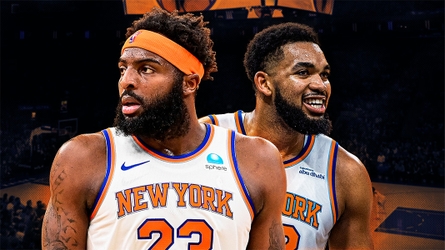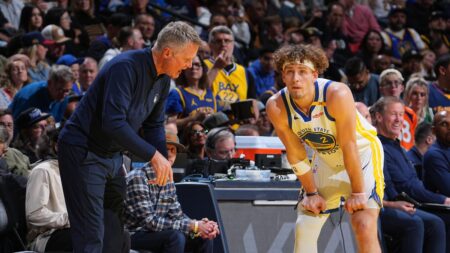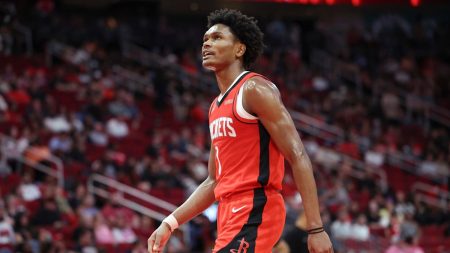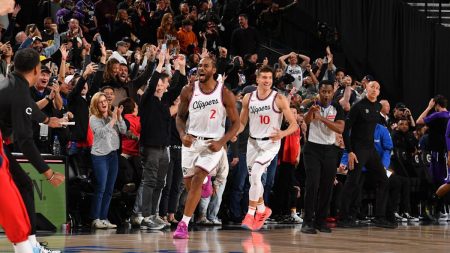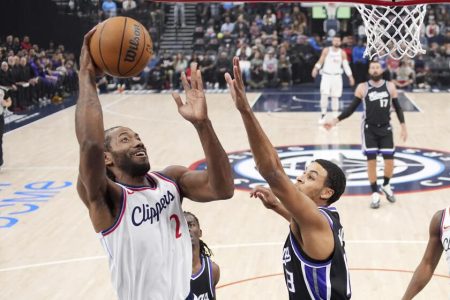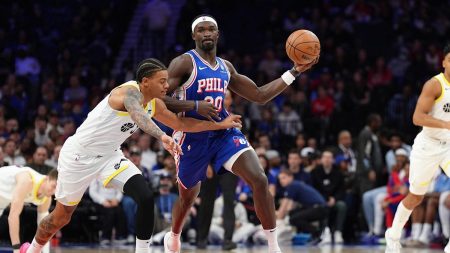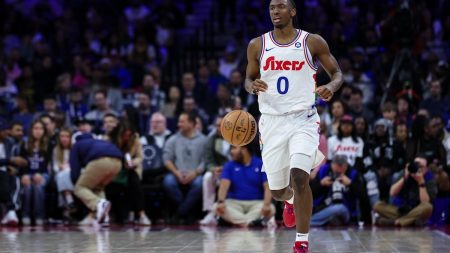Mitchell Robinson Returns: A Boost for the Knicks’ Defense
After a long wait, Mitchell Robinson made his much-anticipated return to the court on Friday night, contributing to the New York Knicks’ thrilling 114-113 victory over the Memphis Grizzlies. Robinson’s absence has been deeply felt, especially given the Knicks’ 20th-ranked defense. His return could provide a significant boost, particularly when paired with All-Star center Karl-Anthony Towns. Robinson’s size and defensive prowess could help shore up New York’s defense, which has struggled in the paint. On his first night back, Robinson played 12 minutes, scoring six points and grabbing five rebounds. While his numbers were modest, his impact was notable, finishing with a plus-11 rating. However, the real test lies ahead as Towns and Robinson have yet to play together regularly, and their on-court chemistry remains to be seen.
Robinson’s Impact on Defense
Robinson’s return is most crucial for the Knicks’ defense, an area where the team has struggled significantly. The Knicks are giving up a staggering 50.6 points in the paint per 100 possessions, placing them third-worst in the league. Their block rate of 29th in the NBA underscores their need for a shot-blocking presence. Robinson, standing at seven feet tall, brings an intimidator’s presence that can alter shots and deter opponents from driving to the rim. His impact is not just statistical; it’s about creating a psychological barrier that forces opponents to think twice before attacking the paint. While Robinson’s return won’t solve all of the Knicks’ defensive woes—particularly against teams with perimeter shooting big men like Cleveland’s Evan Mobley or Boston’s Kristaps Porzingis—it does provide a critical frontline defender that can help steer the defense in the right direction.
The Dynamic Duo: Robinson and Towns
The pairing of Robinson and Towns on the court presents both opportunities and challenges. If the two can find a rhythm, New York’s frontcourt could become a formidable force. Robinson’s ability to protect the rim and Towns’ scoring versatility could create a well-rounded defensive and offensive presence. However, there are concerns. Towns, who has flourished this season as the primary center, averaging 24.6 points and 13.3 rebounds, may face adjustments. Playing with another big man can cramp the offensive spacing and limit Towns’ ability to drive into the paint or operate around the basket. This was evident during Towns’ time with Minnesota, where he played alongside Rudy Gobert. When Gobert was on the floor, Towns’ scoring efficiency and free-throw attempts dropped, as he was relegated to more of a spot-up shooter. Finding a balance where both players can thrive will be a key challenge for Knicks head coach Tom Thibodeau.
Towns’ Adjustment to Playing with Another Big Man
Karl-Anthony Towns has experience playing alongside another big man, most notably Rudy Gobert during his final two seasons with the Minnesota Timberwolves. Gobert’s presence in the paint forced Towns to adapt his game, playing more as a power forward and becoming a spot-up shooter. While this change led to positive results for the Timberwolves, including a conference finals appearance, it also took a toll on Towns’ individual statistics. When Gobert was on the floor, Towns’ scoring efficiency and free-throw attempts decreased. Despite these challenges, Towns and Gobert’s combination was effective, posting a net rating of plus-7.99 points per 100 possessions. The key to success for the Knicks will be ensuring that Towns can still be effective and assertive in the paint, while Robinson provides the necessary defensive support.
The Three-Point Dilemma
While Robinson’s return addresses some of the Knicks’ defensive issues in the paint, it does not solve their vulnerability to three-point shooting. New York’s opponents are shooting an alarming 37.7 percent from beyond the arc, the highest in the league. This deficiency is particularly problematic when facing teams with big men who can shoot from the perimeter. Players like Cleveland’s Evan Mobley and Boston’s Kristaps Porzingis pose a significant threat. Robinson, who is more comfortable defending near the rim, may struggle to guard these stretch bigs effectively. This creates a strategic conundrum for coach Thibodeau, who must find a way to balance the Knicks’ defensive needs without compromising their overall strategy. It will be a delicate balancing act, but one that is crucial for the Knicks’ success.
Finding the Right Balance
The Knicks’ coaching staff, led by Tom Thibodeau, will need to navigate the challenges of integrating Robinson and Towns into the lineup effectively. The key will be optimizing the lineups that have worked well this season while leveraging Robinson’s unique defensive strengths. Thibodeau is known for his defensive acumen and strategic flexibility, which will be crucial in finding the right balance. If the Knicks can successfully integrate Robinson and Towns, it could add a new dimension to their game, making them a more versatile and formidable team. The potential for this pairing to improve New York’s defense without sacrificing Towns’ offensive contributions is high, but it will require careful planning and execution. As the season progresses, the Knicks will have the opportunity to fine-tune their approach, ultimately aiming to build a more resilient and dynamic team.

